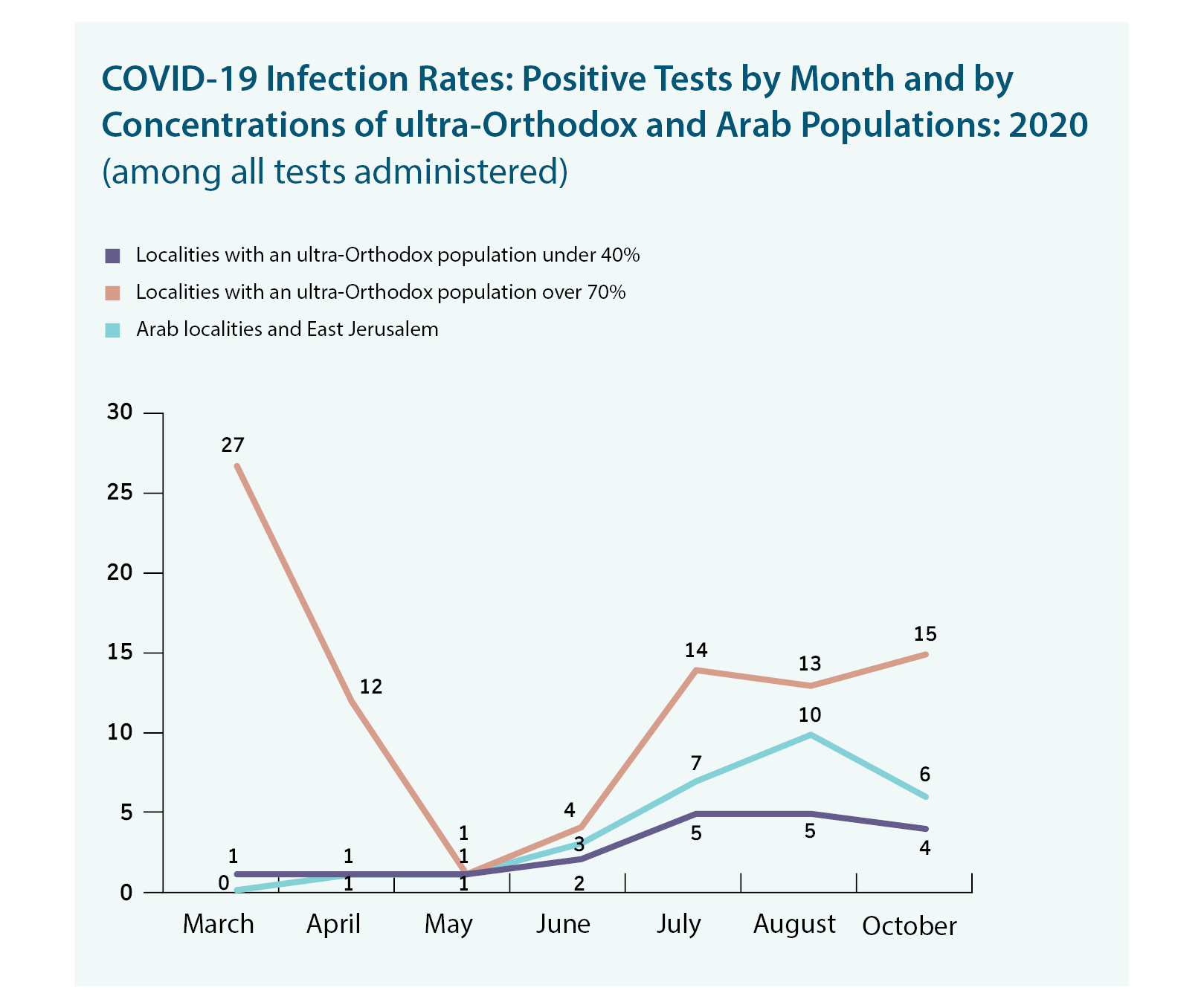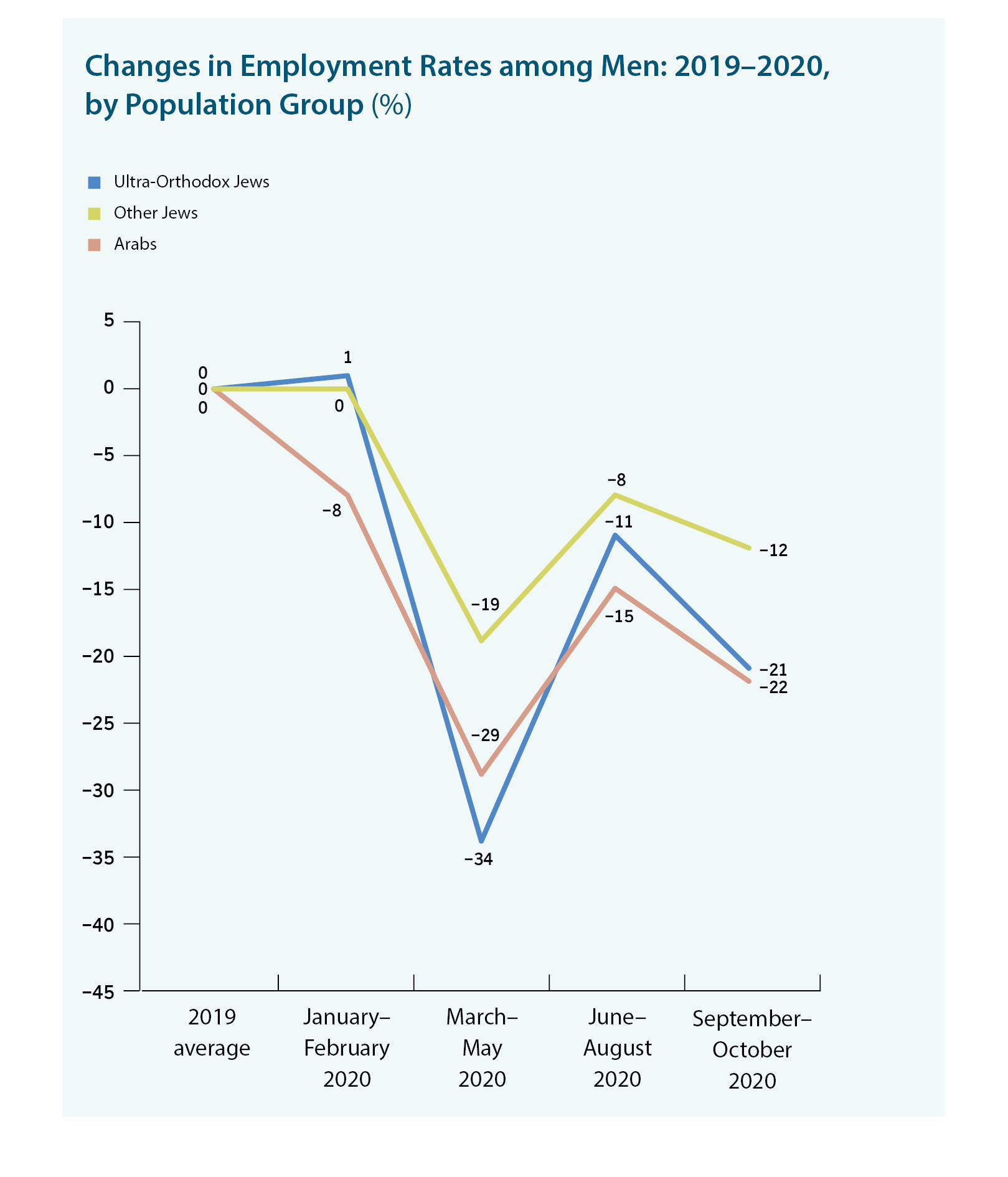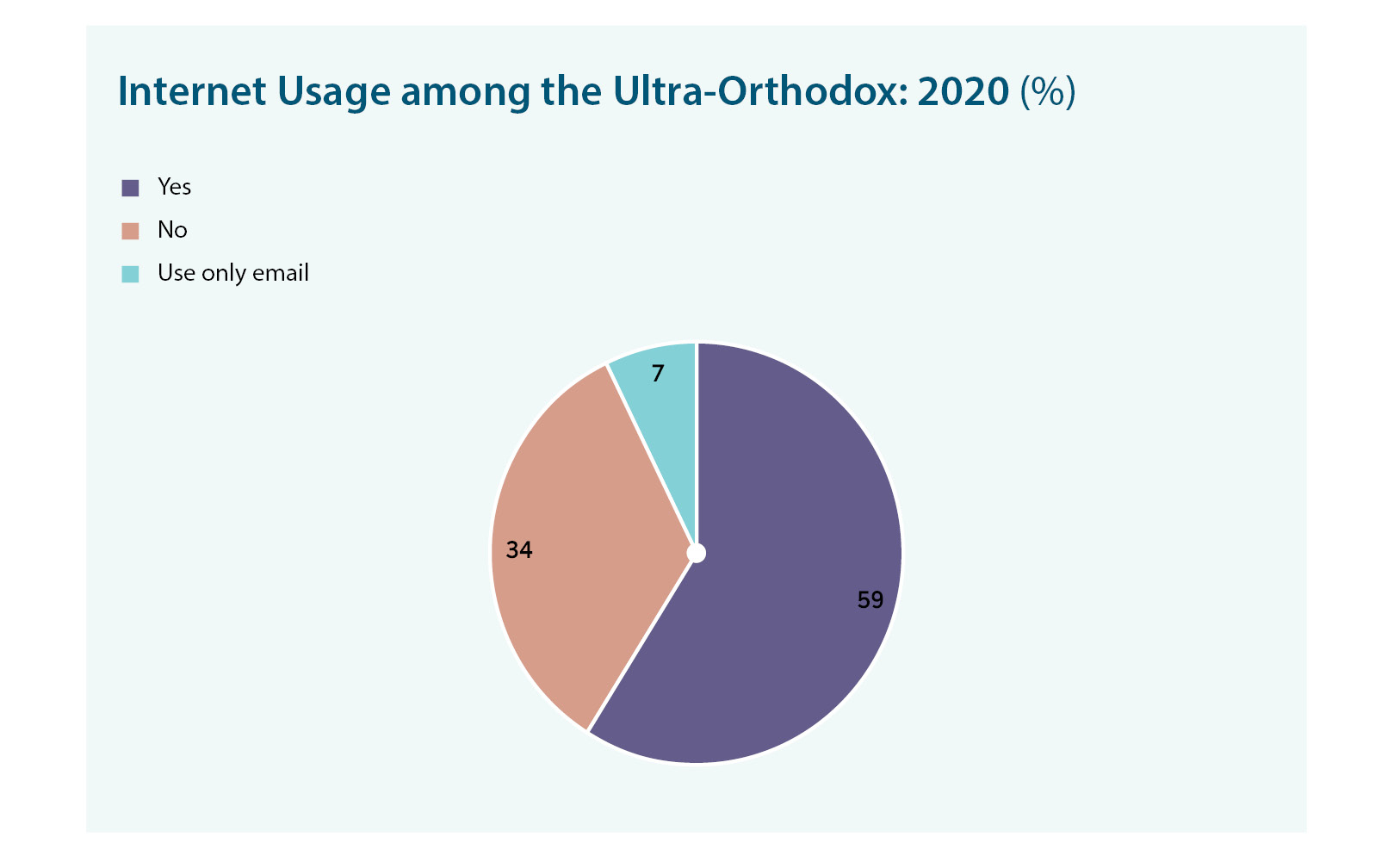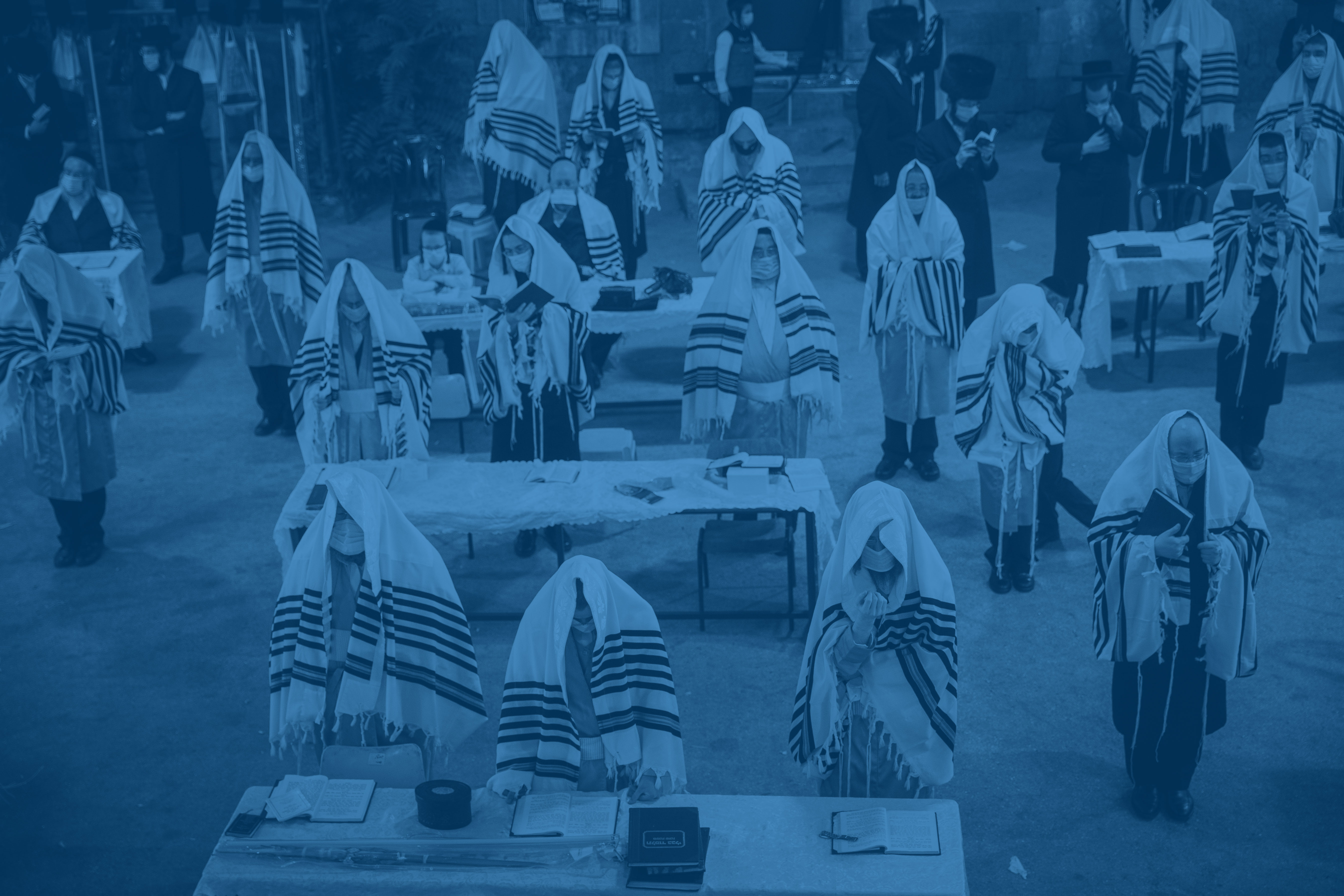COVID-19 and Ultra-Orthodox Society
Chap. 6
The COVID-19 pandemic is the paramount and most dramatic global event of the 21st century so far. The outbreak in Israel began in March 2020, and has led to dramatic changes in the country’s health system, economy, culture, communications, and lifestyles. Naturally, the pandemic has had a significant impact on ultra-Orthodox society, including high infection rates, large numbers of workers placed on furlough, and a rise in internet and social media usage.
Health
COVID-19 dealt a very severe blow to the ultra-Orthodox community, and we estimate that some 42% of all confirmed COVID-19 patients in Israel were ultra-Orthodox. Of the 297,571 confirmed cases reported by the Ministry of Health by the end of October 2020, our estimates put the number of ultra-Orthodox cases at around 125,000 (42%). This rate is particularly high, given the relative size of the ultra-Orthodox population in Israel, at just 12.5% of the overall population. This may even be an underestimate, because the average rate of positive tests for the virus in ultra-Orthodox areas is 14%, almost three times the rate in other areas (5%).

Employment
The pandemic had a much harsher impact on employment among the ultra-Orthodox, as compared with on the rest of the Jewish population. This impact was particularly prominent among ultra-Orthodox women during the first wave, and among ultra-Orthodox men during the second wave.
Ultra-Orthodox employment rates between March and May 2020 (the first wave), compared with same months in 2019, dropped by 35% on average (34% for men and 37% for women). Among other Jews, the decline in employment rates was less steep, and the differences between men and women were larger (19% for men and 27% for women).
Between September and October 2020 (the height of the second wave), the trends in the ultra-Orthodox sector reversed, and the decline in employment was seen mostly among men. Thus, compared to the same period in 2019, there was a decline of 20.5% in employment rates among ultra-Orthodox men, compared with a 15% decline among women. Among other Jews, there was a smaller decline in employment rates for men (10%) and a drop of 16% among women—similar to that among ultra-Orthodox women. Overall, it is clear that ultra-Orthodox women enjoy greater employment resilience than do ultra-Orthodox men.

Internet Usage
Recent years have seen a considerable rise in ultra-Orthodox internet usage rates. The lockdowns imposed in response to the virus led to a further leap in internet exposure in ultra-Orthodox society. A survey conducted in June 2020 found internet usage rates of 66.2%, representing a sharp increase of 7.6% in the number of ultra-Orthodox using the internet over the first three months of the pandemic, and a rise of 4.7 percentage points in ultra-Orthodox internet usage rates over this period. A similar rise was seen in 2018–2019, but this took place over an entire year, whereas the recent change during the pandemic took just three months.














